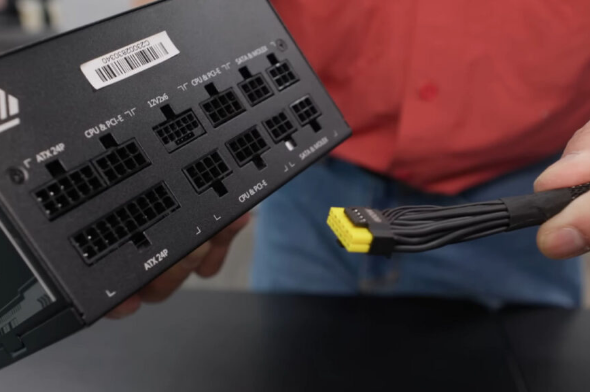Connection to DriversCloud Create a DriversCloud.com account Reset your DriversCloud.com password Account migration
MSI marks power cables yellow to prevent melting problems
When the most complex problems can have the simplest of "solutions".
Admittedly, the term "solution" may be a little excessive in this case, but it's always amusing to see how some people can rack their brains unnecessarily when others demonstrate remarkable common sense. That's essentially what we can learn from the continuing soap opera about power supply problems specific to NVIDIA's GeForce RTX 4090. But first, a quick recap. The GeForce RTX 4090 is the first card in NVIDIA's new Ada Lovelace generation. It's a monster with computing power that's out of all proportion to anything the American firm has ever produced for the general public. In fact, NVIDIA's marketing department is still vacillating between communication aimed exclusively at gamers and more open communication aimed at 3D professionals.
However, this does not solve the problem encountered by NVIDIA just a few weeks after the release of this GeForce RTX 4090: several users have begun to report more or less serious problems with connector melting. In some cases, it was just a question of the adapter that NVIDIA delivers with its card, as it uses a new 12VHPWR port that we need to be able to connect to the 8-pin connectors on our power supplies. Even more embarrassing, other users have pointed out a partial melting of the graphics card connector itself. This, of course, rendered the card unusable. Rather than turn a deaf ear, NVIDIA was quick to respond, explaining that it would be taking back all the cards concerned (in exchange for replacements, of course) in order to study them. From this study, it seemed clear that the problem was linked to incorrect insertion of the power cable.
This is where MSI's common sense comes into play. While NVIDIA is slow to come up with a solution, at Computex 2023 in Taipei, MSI actually demonstrated a new type of cable for the brand's modular power supplies. On its stand, MSI demonstrated a MAG 850GL PCIe Gen5 ATX3.0 block, but the solution is easily duplicable to other power supplies, from other brands. The solution consists of a tiny yellow plastic insert at the connector. When you insert the cable into the socket on the power supply or graphics card side, it's easy to see whether it's been pushed in far enough: if the yellow plastic insert is still at least partly visible, you need to push harder! Simple as that, isn't it? Of course, such a solution would mean buying new cables, but it wouldn't necessarily even be necessary to adapt power supplies and graphics cards.
Despite MSI's good sense, we must point out that for some weeks now, voices have been raised to denounce the fact that the GeForce RTX 4090's power supply problem is exclusively linked to the incorrect insertion of the cable. Some users would still have had the cast iron problem, even if they had been very careful. What's more, while we've tended to point the finger at the bending/bending of connectors, other users have reported partial melting even with a connector bent at 90°. So it's not certain that NVIDIA is at the end of its tether, but color-coding power cables can't hurt!





